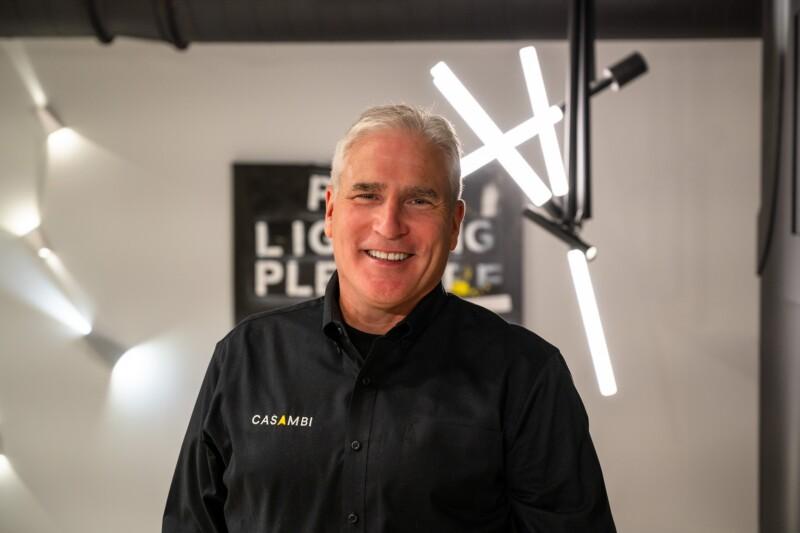Human-Centric Lighting

Artificial light is part of our everyday lives, but this has not always been the case. In fact, artificial light has only been part of the human experience for around 150 years. It has taken time to perfect this art form, but with the onset of human-centric lighting, we are growing closer than ever to doing so.
Human-centric lighting, or HCL, is an important term within the professional lighting world. Significant research has been dedicated to studying the effects of lighting to our well-being. To this end, an increasing number of businesses are investing in human-centric lighting. The global market value of this technology is expected to reach $3.91 billion by the year 2024.
This is money wisely spent, as human-centric lighting is critical to keeping up with our ever changing lifestyle. Until around 200 years ago, human beings spent 90% of our waking hours outside, enjoying natural light. This has now been reversed, with 90% of the time now unfolding indoors – under the glare of artificial illumination.
Indoor lighting remains essential, but so is the quality of light. Inappropriate or low quality light settings can have a severe impact on our health and wellbeing.
What is Human-Centric Lighting?
Human-centric lighting, as the name suggests, places the needs of the human body at the center of a lighting set-up. The human body relies upon natural light to function, utilizing the circadian rhythm. When the body is exposed to light, it undertakes a wide range of reactions.
The circadian rhythm is linked directly to wakefulness and sleep, mood and emotion, the release of hormones, and the ability to concentrate. This is why so many individuals who live far north or south of the equator struggle with Seasonal Affective Disorder during the winter months when natural light is in increasingly short supply.
The purpose of HCL is to synchronize the human body clock to natural light. Ordinarily, this would be rays of the sun. In the 21st Century, this is no longer possible for many, and we are spending more and more time inside.
HCL utilizes technology – referred to as tunable white lighting – to imitate natural conditions. The spectrum, hue, and intensity of lighting vary according to the time of day, making an individual significantly more comfortable. By managing brightness, color temperature, and direction of radiance, HCL can breach the divide between natural and artificial lighting.
This all sounds comparatively space-age, but HCL is not a new or novel concept. The impact of light on our health has been researched for decades. The reason HCL has risen to the forefront of consideration now is the dawn of LED lighting and affordable control systems, which provide the opportunity for flexible and cost-effective lighting solutions.
Research remains ongoing and will for some time. What is beyond dispute is that HCL will play an indispensable role in both the present and future of indoor illumination.
How Human-Centric Lighting Works
As discussed, HCL relies upon tunable white technology. This is more flexible and less harsh than the constant, bright whiteness of artificial fluorescent lighting, and significantly more aesthetically pleasing than the dull yellow provided by incandescent bulbs.
When utilizing tunable white lighting, the temperature of the illumination is adjusted. The two extremes are dubbed warm and cool, while a range of compromises can be reached in between. This is achieved by mixing tones using smart lighting control, which creates a range of hues and vibrancy. The lights can be dimmed or enhanced, according to the needs of those conducting their business beneath the lighting.
Core tenets to keep in mind when designing HCL
Synchronization with Daylight – Use daylight as your guide for programming an HCL.
Appropriate Lighting for the Time of Day – the human body expects bright light in the morning, and warmer, dimmed lighting by the evening. Pattern your HCL according to these expectations to sustain the circadian rhythm.
Eco Friendly and Sustainable Lighting – HCL light is not needed in areas that are visited for short periods of time. It brings the most value to well-being in those spaces where people spend most of their time. Use light optimally only when it’s needed for well-being. Utilise also natural daylight when possible.
Bespoke Lighting Tailored to a User – The purpose of HCL is that is tailored carefully to the user. Circadian rhythm varies depending on persons age and lighting should be designed to meet the specific needs of the users.
Lighting Tailored to Duties – Consider what tasks an individual will be performing and how HCL can help with productivity, well-being and concentration.
When used in perfect harmony, this lighting style enhances mental and physical health, eradicating the concerns so commonly associated with glare and disrupted circadian rhythms.
Advantages of Human-Centric Lighting
The greatest advantage of HCL is the enhanced mental and physical wellbeing. By ensuring the human body retains appropriate circadian rhythm, health and productivity are drastically improved. Examples of this include:
- Right kind of lighting can boost mental calm and restfulness
- Appropriate lighting by evening leads to superior, restful sleep
- Correct lighting improves mood, which in turn leads to sharper concentration and memory retention
- Natural circadian rhythms release dopamine, controlling appetite and impulse control
In addition, HCL can also boost aesthetic design in a professional setting. As HCL is adjustable, a range of different color temperatures can be assigned and controlled at the touch of a button. This means that less concern and consideration can be applied to particular lamps and light assignments with a complex.
Overall, human-centric lighting lives up to its billing. It brings a unique element of emotion to illumination. Providing a boost to health and wellbeing, HCL is the closest technology that has come to bring the natural world indoors.


